Seasoned blends are pre-mixed combinations of spices, herbs, salts, and other ingredients designed to enhance flavor in cooking. This comprehensive guide covers everything you need to know about using, making, and choosing the best seasoned blends for any dish.
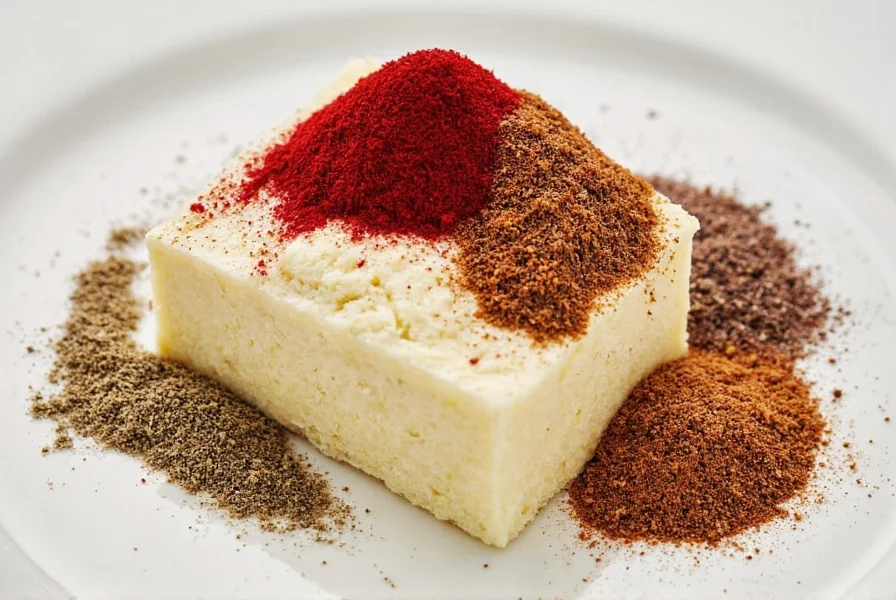
Table of Contents
- What Exactly Is a Seasoned Blend?
- Why Use Seasoned Blends?
- Top 10 Expert Tips for Using Seasoned Blends
- Buying Guide: How to Choose the Right Seasoned Blend
- How to Create Your Own Signature Seasoned Blend
- Common Types of Seasoned Blends Around the World
- Frequently Asked Questions About Seasoned Blends
- Conclusion
What Exactly Is a Seasoned Blend?
A seasoned blend is a carefully formulated mixture of spices, herbs, salts, and sometimes dried vegetables or other flavor enhancers designed to create balanced, complex flavors for specific culinary applications. Unlike single spices, seasoned blends offer complete flavor profiles that work harmoniously together.
Common examples include:
- Taco Seasoning (Mexican/US: paprika, chili powder, cumin, garlic, onion)
- Garam Masala (Indian: cumin, coriander, cardamom, cloves, cinnamon)
- Herbes de Provence (French: thyme, rosemary, savory, marjoram)
- Za'atar (Middle Eastern: thyme, sumac, sesame seeds, oregano)
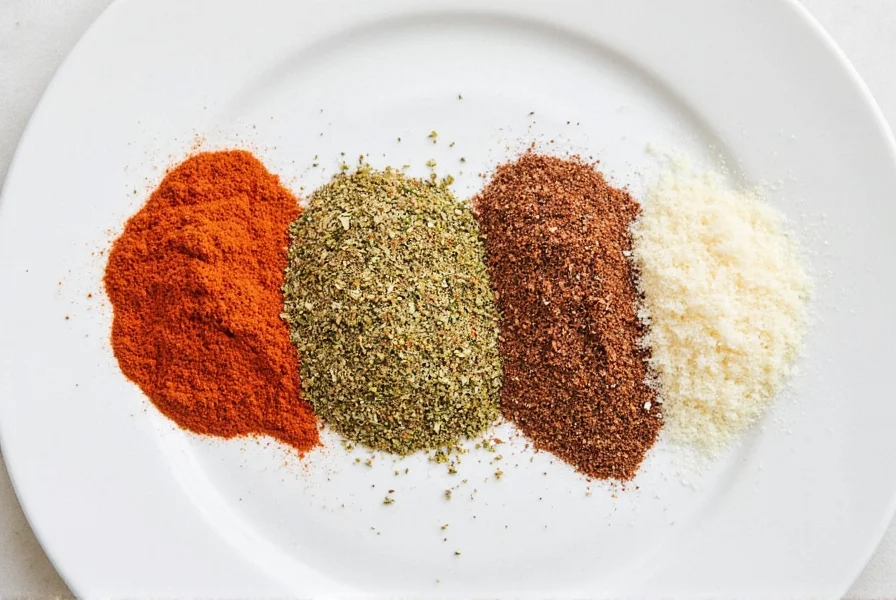
Why Use Seasoned Blends?
Seasoned blends save time while delivering restaurant-quality flavor. Here's why professional chefs and home cooks rely on them:
- Saves Time: Eliminates measuring multiple spices separately
- Consistent Results: Ensures uniform flavor in every batch
- Balanced Flavor Profile: Expertly formulated to avoid overpowering any single note
- Versatility: Works across proteins, vegetables, grains, and even baked goods
- Authentic Cuisines: Provides genuine regional flavors without extensive spice sourcing
Top 10 Expert Tips for Using Seasoned Blends Like a Pro
- Understand Your Base Ingredients: Most blends contain salt (20-30%) as the foundation. Adjust salt content when substituting for individual spices.
- Balance Flavor Components: Aim for harmony between heat, sweetness, umami, and acidity. For example, a good taco blend balances chili heat with cumin's earthiness and citrus brightness.
- Start Small and Taste: Begin with 1 teaspoon per pound of ingredients. You can always add more, but you can't remove excess seasoning.
- Store Properly: Keep in airtight containers away from light, heat, and moisture. Ground spices retain peak flavor for 6-8 months; whole spices last 1-2 years.
- Toast Whole Spices First: Lightly toast whole spices (like cumin seeds) before grinding to unlock deeper aromas.
- Add Early for Maximum Flavor: Incorporate dry blends during the initial cooking stage to allow flavors to bloom and meld.
- Use Fresh Spices: Replace spices every 6-12 months. Test freshness by smelling - if aroma is weak, it's time for a replacement.
- DIY for Personalization: Create custom blends tailored to your taste preferences and dietary needs.
- Match Blend to Dish Type: Use chicken-specific blends for poultry, seafood blends for fish, and meat-specific blends for red meats.
- Label Clearly: Always label homemade blends with contents and date to avoid confusion in your pantry.
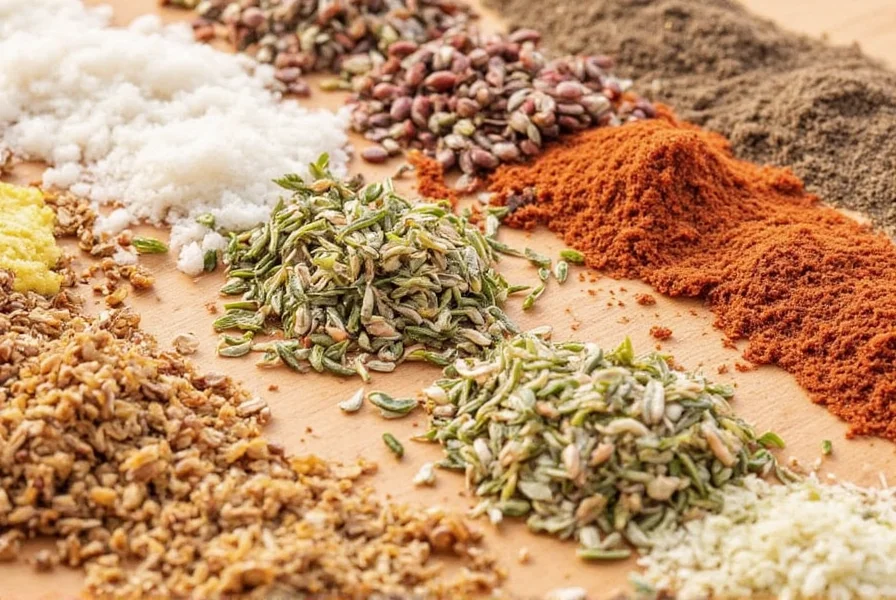
| Product | Key Features | Best Uses | Price Range | Where to Buy |
|---|---|---|---|---|
| McCormick Taco Seasoning | Pre-measured blend with paprika, chili powder, cumin, garlic, onion | Tacos, fajitas, chili, nachos | $2.50-$4.00 | Supermarkets, Amazon |
| Penzeys Garam Masala | Small-batch, freshly ground with cardamom, cinnamon, cloves | Curries, lentils, roasted vegetables | $5.95-$8.50 | Penzeys.com, specialty stores |
| Spice Islands Italian Seasoning | Garlic, oregano, basil, rosemary, thyme blend | Pasta dishes, pizza, marinades | $1.99-$3.50 | Supermarkets, Walmart |
| The Spice Lab Custom Blend | Personalized blends created to your specifications | Professional kitchens, catering | $15-$50 (custom) | thespicelab.com |
| Badia Adobo Seasoning | Latin-inspired blend with garlic, onion, oregano, turmeric | Grilled meats, rice dishes, beans | $1.75-$3.00 | Supermarkets, Hispanic grocery stores |
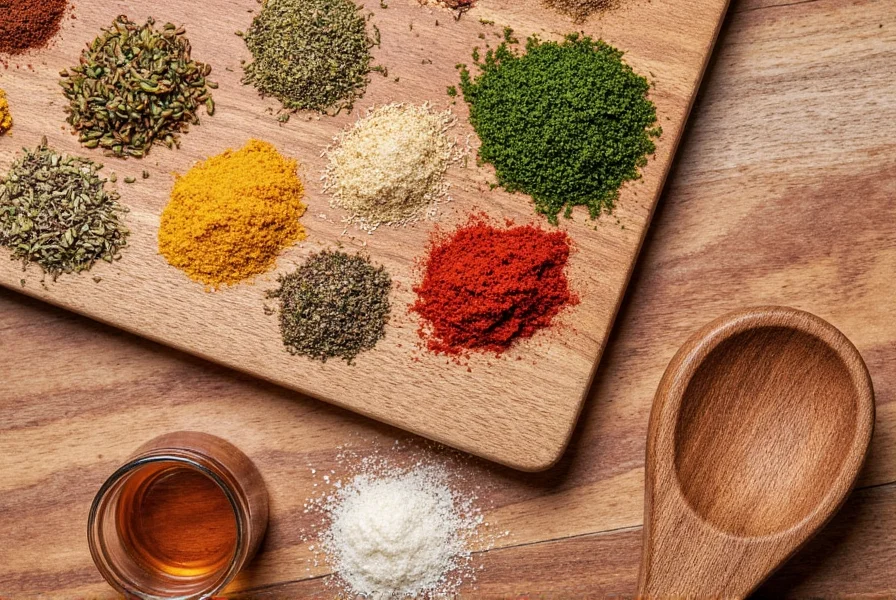
How to Create Your Own Signature Seasoned Blend
Creating custom blends is simple with this professional formula:
Basic Blend Formula:
- Base (30-40%): Salt or sugar to carry flavor (e.g., kosher salt, brown sugar)
- Primary Flavor (30-40%): Dominant spice (e.g., paprika, cumin, garlic powder)
- Secondary Flavor (20-25%): Complementary spices (e.g., coriander, mustard seed, onion powder)
- Accent (5-10%): Bold elements for depth (e.g., cayenne, sumac, smoked paprika)
Example: Mediterranean Herb Blend
- 2 tbsp kosher salt
- 1 tbsp dried oregano
- 1 tbsp dried thyme
- 1 tsp dried rosemary
- 1 tsp lemon zest powder
- ½ tsp black pepper
Perfect for grilled chicken, roasted vegetables, or mixed into olive oil for dipping bread.
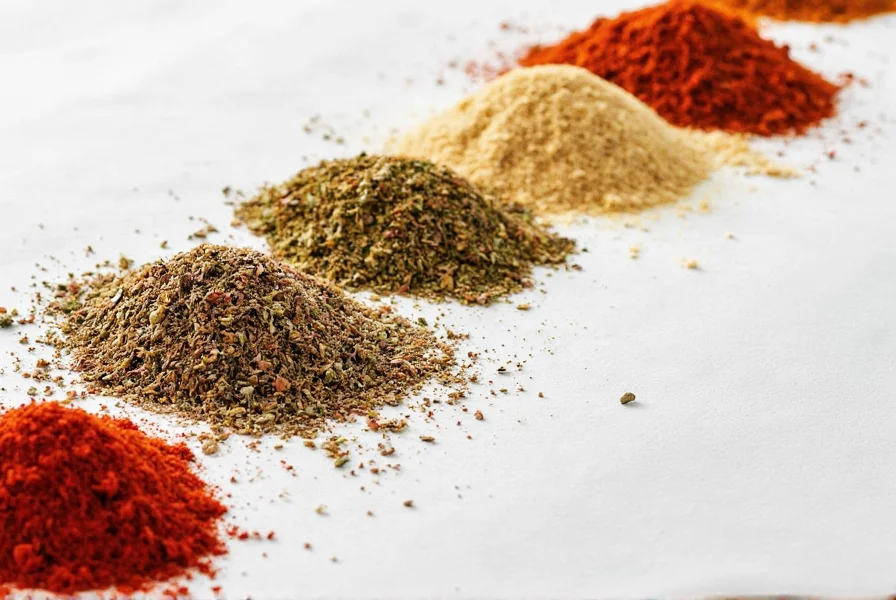
| Blend Name | Origin | Main Ingredients | Best Applications |
|---|---|---|---|
| Taco Seasoning | Mexico/USA | Paprika, chili powder, cumin, garlic, onion | Tacos, fajitas, chili, nachos |
| Garam Masala | India | Cumin, coriander, cardamom, cloves, cinnamon | Curries, lentils, roasted vegetables |
| Chinese Five-Spice | China | Star anise, Sichuan pepper, clove, fennel, cinnamon | Roasted meats, stir-fries, dumplings |
| Harissa Paste | Tunisia/North Africa | Chili peppers, garlic, coriander, caraway, olive oil | Grilled meats, stews, couscous, as a condiment |
| Ras el Hanout | Morocco | Cumin, cinnamon, nutmeg, cardamom, turmeric (20+ spices) | Lamb tagine, roasted squash, flatbread dips |
| Herbes de Provence | France | Thyme, rosemary, savory, marjoram, lavender | Roasted chicken, grilled vegetables, bread dips |
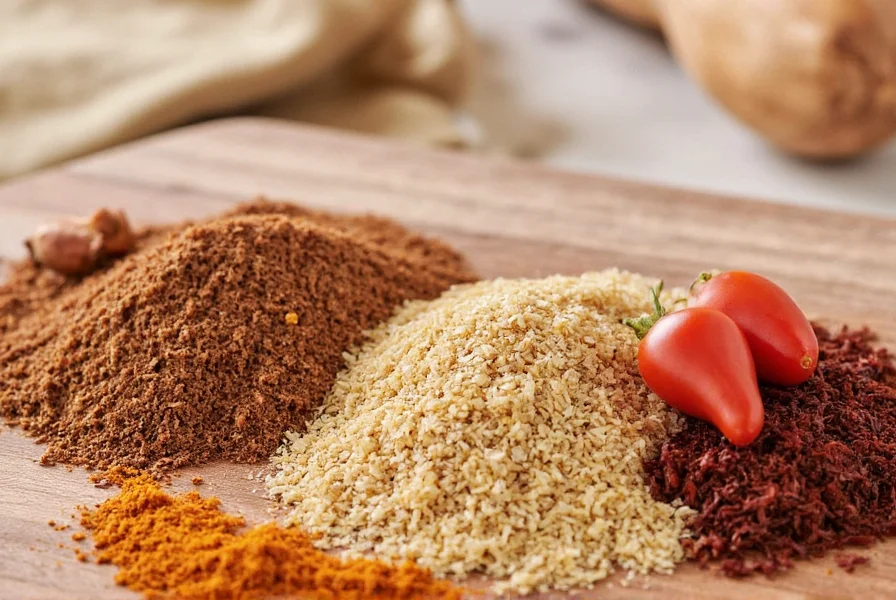
Frequently Asked Questions About Seasoned Blends
What's the difference between a seasoned blend and a single spice?
Seasoned blends combine multiple spices, herbs, and other ingredients to create balanced, complete flavor profiles for specific dishes. Single spices provide only one flavor note, while blends deliver harmonious complexity designed for particular culinary applications.
How long do seasoned blends stay fresh?
Properly stored in airtight containers away from light and heat, ground spice blends maintain peak flavor for 6-8 months. Whole spices last 1-2 years. Replace when aroma weakens or color fades significantly. Always check expiration dates on commercial blends.
Can I substitute seasoned blends for individual spices in recipes?
Yes, but with adjustments. Since blends contain multiple spices, use 1-2 teaspoons per pound of ingredients as a starting point. For recipes calling for specific spices, reduce other seasonings accordingly. Always taste and adjust before finalizing.
Are most seasoned blends gluten-free?
Most pure spice blends are naturally gluten-free, but some commercial products may contain anti-caking agents or fillers with gluten. Always check labels for "gluten-free" certification if you have sensitivities. Homemade blends using pure spices are guaranteed gluten-free.
How much seasoned blend should I use per pound of meat or vegetables?
Start with 1-2 teaspoons per pound of ingredients. For delicate proteins like fish or chicken, begin with 1 teaspoon. For heartier meats like beef or lamb, use 1.5-2 teaspoons. Always taste before adding more - you can add but not remove excess seasoning.
Can I use the same seasoned blend for multiple cuisines?
While some versatile blends like garlic-herb work across cuisines, most traditional blends are designed for specific culinary traditions. Using garam masala in Mexican dishes or taco seasoning in Indian cooking creates flavor conflicts. Match your blend to the cuisine for authentic results.
Conclusion
Seasoned blends transform ordinary ingredients into extraordinary dishes with minimal effort. Whether you're using store-bought blends or creating your own signature mixtures, understanding how to properly use and store these flavor powerhouses will elevate your cooking to new heights.
With the right knowledge, you can confidently experiment with global flavors, save valuable kitchen time, and consistently create restaurant-quality meals at home. Start small, taste often, and soon you'll be mastering the art of seasoned blends like a professional chef.
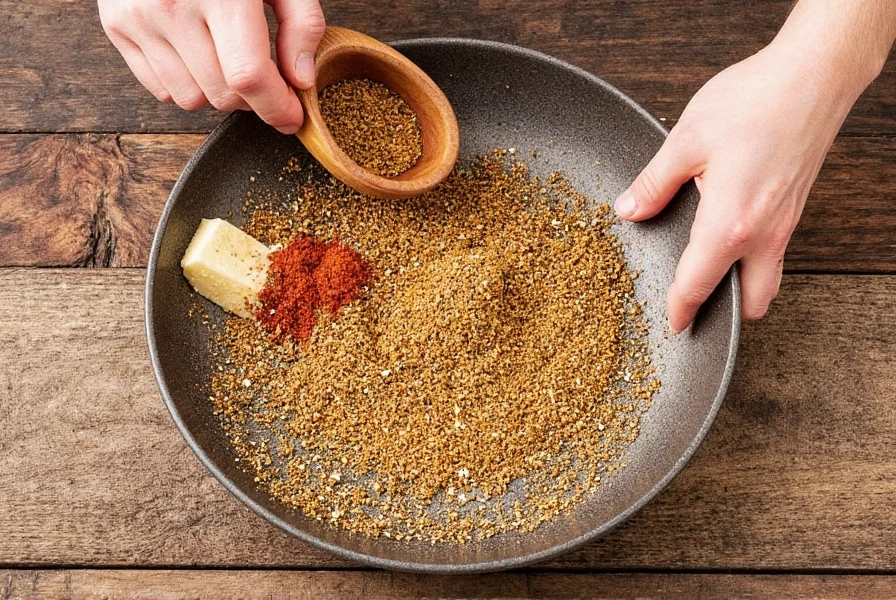
Happy cooking!

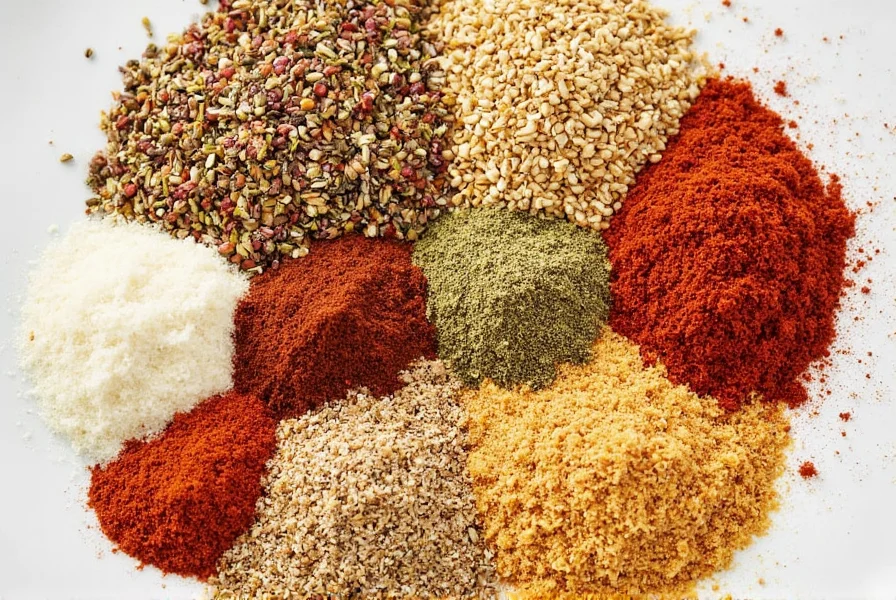









 浙公网安备
33010002000092号
浙公网安备
33010002000092号 浙B2-20120091-4
浙B2-20120091-4